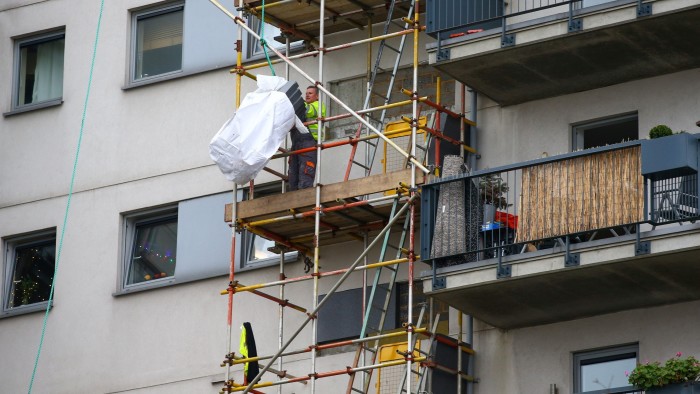Unlock the Editor’s Digest for free
Roula Khalaf, Editor of the FT, selects her favourite stories in this weekly newsletter.
The UK government has announced new deadlines to fix dangerous cladding on tall buildings by the end of the decade, responding to pressure to speed up work seven years after the Grenfell Tower fire that killed 72 people.
Buildings higher than 11 metres with unsafe cladding will have to be remediated, or have a completion date, by the end of 2029, the Ministry of Housing, Communities and Local Government said on Monday.
All buildings higher than 18 metres covered by the government’s schemes will also have to be finished by that date.
The department said “landlords will be liable for severe penalties” if they missed the deadlines, and it will lay these out in detail in parlaiment.
“The pace of remediation has been far too slow for far too long. We are taking decisive action to right this wrong and make homes safe,” said deputy prime minister Angela Rayner.
The announcement comes ahead of a parliamentary debate on Monday on the damning findings of the Grenfell Tower inquiry, which detailed “decades of failure” by local and national government, regulators, construction companies and suppliers of cladding.
Thousands of buildings with fire safety problems were identified in the aftermath of the deadly Grenfell fire in west London in 2017.
The government said 95 per cent of buildings with the same type of cladding as the Grenfell Tower have been remediated, but overall only 30 per cent of buildings have been fixed, with “potentially thousands more buildings” still not identified.
A report by the National Audit Office spending watchdog, last month said fixing all tall buildings could cost up to £22.4bn and would probably not be finished by 2035.
Residents in these buildings often face huge costs from insurance and service charges, difficulty selling or remortgaging their homes, as well as the risks and anxiety of living in potentially dangerous properties.
The approach to fire safety under the previous Conservative government was sharply criticised by campaigners and housebuilders for its excessive complexity, with multiple schemes and levies leading to protracted legal disputes over what safety work is actually necessary and who should pay for it.
Campaign group End Our Cladding Scandal said the new plans still ignored safety issues other than cladding, and that remediation works often did not go far enough, leaving buildings “half safe”.
The government is also set to go ahead with the proposed building safety levy, a tax on new developments that is expected to raise £3bn from housebuilding groups to help fund safety works, according to industry figures.
One executive complained that this “hefty tax on homebuilding” came a week after chancellor Rachel Reeves promised no more tax increases on British businesses.
Large housebuilders are already set to pay £2bn in extra corporation tax to fund remediation. In addition, 54 large developers have agreed with the government to fix life-critical safety issues in buildings they built.
The government said 29 companies, covering 95 per cent of these buildings, had agreed to new deadlines, meaning remediation work must start by summer 2027. This deadline gives developers an extra year beyond what ministry officials had proposed in negotiations with the companies.
The Home Builders Federation industry group said Monday’s announcement “should mark the start of a new approach” but that companies needed government support to deal with obstructive building owners and to speed up work at the Building Safety Regulator.
The department is expected to introduce a new strategy for fire safety in social housing in the spring, alongside wider plans to fund affordable housing.
Read the full article here

